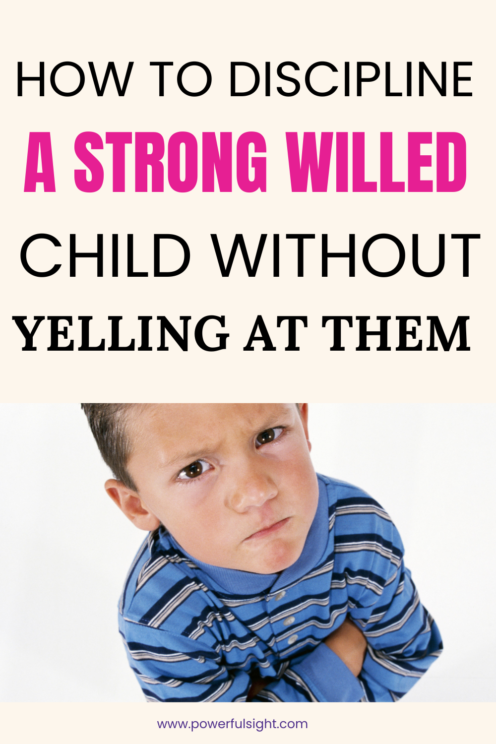Strong-willed children are often characterized by their determination, persistence, and a pronounced need for autonomy. These traits can manifest in behaviors that are both challenging and beneficial. The determination and persistence they exhibit can make it difficult for parents to enforce discipline, yet these same attributes can set a foundation for significant achievements and resilience in later life.
Child psychologists often describe strong-willed children as those who are highly independent and self-motivated. They tend to have a clear vision of what they want and are willing to go to great lengths to achieve their goals. This strong sense of purpose is accompanied by a reluctance to accept limits or directives imposed by others, which can lead to frequent power struggles with parents and teachers.
One of the key insights from child psychology is that the behavior of strong-willed children is not inherently negative. According to Dr. Laura Markham, a clinical psychologist, “Strong-willed children are often misunderstood. Their need for autonomy and their drive for control are not signs of defiance but rather indicators of a strong personality and leadership potential.” These children typically have a firm sense of justice and fairness, and they are often very passionate about their beliefs and convictions.
Understanding why some children exhibit strong-willed behavior is crucial for effective parenting. Factors such as temperament, early experiences, and even genetic predispositions can play a role.
Studies have shown that children with a strong-willed nature are more likely to become assertive, confident adults who are capable of navigating challenges with tenacity.
Below are the tips on how to discipline a strong-willed child.

How to Discipline a Strong-Willed Child
1. Set Clear Boundaries and Expectations
Setting clear boundaries and expectations is crucial when understanding how to discipline a strong-willed child. These children often possess a distinct sense of autonomy and determination, which can make traditional disciplinary methods less effective. To foster better behavior and decision-making, it is essential to establish transparent and consistent rules.
One important aspect of this approach is transparent communication. Strong-willed children need to comprehend the reasons behind the rules. Instead of simply issuing directives, explain the logic and benefits of these boundaries. For instance, rather than saying, “You must be home by 6 PM,” explain, “Being home by 6 PM ensures you have enough time to complete your homework and get a good night’s sleep, which helps you perform well in school.”
Consistency is another key factor. Strong-willed children thrive on routine and predictability. Once boundaries are set, they must be maintained consistently. This means that consequences for breaking rules should not waver. If bedtime is at 8 PM, it should remain at 8 PM every night, regardless of circumstances. Consistency helps reinforce the importance of these rules and reduces the likelihood of power struggles.
Effective boundary-setting techniques often involve collaborative rule-making. Engage your child in the process by discussing and agreeing on rules together. This approach not only makes them feel valued but also increases their commitment to following the agreed-upon boundaries. For example, if your child struggles with screen time, sit down together and decide on a reasonable daily limit, explaining the importance of balancing screen time with other activities.
Moreover, establishing positive reinforcement for adhering to boundaries is beneficial. Recognize and reward your child’s efforts when they respect the rules. This can be through verbal praise, a reward system, or extra privileges. Positive reinforcement reinforces good behavior and motivates them to continue adhering to set expectations.
By setting clear boundaries and maintaining consistent expectations, you create an environment where strong-willed children can thrive. This structured approach helps them understand limits, make better decisions, and develop a sense of responsibility and discipline.
Related: How to discipline a teenage girl
2. Use Positive Reinforcement
Positive reinforcement is a powerful strategy for encouraging desirable behavior, particularly when addressing the challenge of how to discipline a strong-willed child. By focusing on positive reinforcement, parents and caregivers can effectively nurture and guide strong-willed children without resorting to punitive measures. This approach involves recognizing and rewarding good behavior, which, in turn, encourages the child to repeat such behavior.
There are various forms of positive reinforcement that can be employed. Praise is one of the simplest and most effective methods. Acknowledging a child’s efforts and accomplishments with words of encouragement can significantly boost their morale and motivate them to continue behaving positively. For instance, saying, “I am really proud of you for sharing your toys,” reinforces the behavior of sharing.
Another form of positive reinforcement involves tangible rewards. These can range from small treats, like stickers or extra playtime, to more significant privileges, such as choosing a family activity. It’s essential, however, to balance these rewards to avoid creating a dependency. Over-reliance on tangible rewards might lead children to expect a prize for every good deed, which can undermine intrinsic motivation.
Privileges, such as extra screen time or a later bedtime on weekends, can also be used effectively. These privileges should be clearly linked to specific positive behaviors. By clearly communicating the connection between the behavior and the reward, children understand the expectations and are more likely to comply.
To reinforce positive behavior without creating dependency, it’s crucial to gradually phase out tangible rewards and focus more on verbal praise and acknowledgment. This transition helps children appreciate the intrinsic rewards of good behavior, such as the satisfaction of a job well done or the positive reaction from others.
When implementing positive reinforcement, consistency is key. Consistent recognition of good behavior helps to establish clear expectations and reinforces the behavior you want to see. By using positive reinforcement thoughtfully and strategically, parents and caregivers can successfully discipline a strong-willed child while fostering a positive and supportive environment.
Related: Signs your child is spoiled
3. Implement Natural Consequences
One effective strategy for disciplining a strong-willed child involves implementing natural consequences. This method hinges on the principle that children learn best from the direct outcomes of their actions. By allowing a child to experience the natural results of their behavior, they gain a practical understanding of cause and effect, promoting more thoughtful decision-making in the future.
Natural consequences differ from parental-imposed punishments in that they occur organically. For instance, if a child refuses to wear a coat on a chilly day, they will feel cold. This discomfort serves as a natural consequence, teaching them the importance of appropriate clothing choices. Similarly, if a child neglects to complete their homework, they might face lower grades or the disappointment of not understanding the material during class discussions.
Applying natural consequences can be straightforward in everyday situations. Consider a scenario where a child repeatedly leaves their toys scattered across the floor. Instead of issuing a punishment, parents can allow the toys to remain untouched, resulting in the child eventually running out of things to play with. This natural outcome emphasizes the importance of tidying up after playtime.
Another example involves interpersonal relationships. If a strong-willed child consistently refuses to share with peers, they may find themselves isolated during group activities. This social exclusion serves as a natural consequence, helping the child recognize the value of cooperation and generosity.
While using natural consequences, it is crucial to ensure the child’s safety. Parents must gauge the situation to avoid any harm or excessive discomfort. The goal is to foster learning through experience rather than to create undue hardship. By thoughtfully integrating natural consequences into discipline strategies, parents can effectively guide their strong-willed children toward more responsible and considerate behavior.

4. Practice Consistency and Follow-Through
When it comes to understanding how to discipline a strong-willed child, one of the most crucial elements is practicing consistency and follow-through. Consistency in enforcing rules and consequences helps strong-willed children feel secure, knowing that their environment is predictable and stable. A lack of consistency, on the other hand, can lead to confusion and defiance, as the child may push boundaries to test limits.
Establishing clear rules and expectations is the first step. Once these are in place, it is imperative to adhere to them consistently. For example, if a rule states that bedtime is at 8 PM, ensure that this time is upheld every night. This predictability helps strong-willed children understand what is expected of them, reducing the likelihood of power struggles.
Follow-through is equally important. If a consequence is stated for a particular behavior, it must be implemented every time that behavior occurs. For instance, if a child is told that they will lose screen time for not completing their homework, it is essential to enforce this consequence without exceptions. This reinforces the notion that rules are non-negotiable and that actions have consistent outcomes.
Maintaining consistency can be challenging, especially in the face of persistent resistance or external stressors. It’s helpful for parents to create a plan and support system to stay on track. One practical tip is to develop a routine or schedule that incorporates the established rules, making it easier to follow through daily. Additionally, parents can benefit from checking in with each other to ensure they are united in their approach, providing a cohesive front for the child.
In sum, practicing consistency and follow-through is a foundational strategy in learning how to discipline a strong-willed child. By providing a stable and predictable environment, parents can help their children understand boundaries and develop self-discipline, ultimately fostering a sense of security and cooperation.
Related: How to stop yelling at your kids
5. Encourage Open Communication
One of the key strategies in understanding how to discipline a strong-willed child is fostering open communication. Open and honest dialogue forms the backbone of a trusting relationship, which is essential for effective discipline. When children feel heard and understood, they are more likely to cooperate and adhere to behavioral expectations.
Active listening is a fundamental technique in this regard. It involves giving your full attention to the child, acknowledging their feelings, and responding thoughtfully. By making eye contact, nodding, and using verbal affirmations such as “I understand” or “I see,” parents can show that they are genuinely interested in what the child has to say. This not only validates the child’s emotions but also encourages them to express themselves openly.
Expressing empathy is another crucial aspect of open communication. When a child is upset or frustrated, acknowledging their feelings can make a significant difference. Phrases like “I can see that you’re upset about this” or “It must be hard for you to deal with this” help the child feel understood and respected. This empathetic approach can defuse tension and pave the way for more constructive conversations about behavior and discipline.
Validating a child’s feelings does not mean agreeing with all their actions or demands. Instead, it involves recognizing their emotions and showing that their perspective is valued. For example, if a strong-willed child is angry about a restriction, acknowledging their frustration while explaining the reasons behind the rule can help them understand the necessity of certain boundaries.
Creating a communicative environment where a child feels safe to express their thoughts and emotions fosters mutual respect. This respect is crucial for teaching discipline, as it encourages children to listen and consider the viewpoints of others. When children respect their parents’ guidance, they are more likely to follow rules and exhibit self-discipline.
Incorporating these communication techniques can transform the discipline process into a collaborative effort, making it easier to guide a strong-willed child toward positive behavior.
Related: How to teach your child empathy
6. Utilize Time-Outs Effectively
The time-out technique, when used correctly, can be a valuable tool in teaching discipline to a strong-willed child. The purpose of a time-out is not to punish, but to provide a moment of calm and reflection. It offers the child an opportunity to regain self-control and understand the consequences of their actions. To effectively implement time-outs, it is crucial to select appropriate situations, determine the correct duration, and communicate clearly with the child.
Time-outs are most effective in situations where the child is displaying aggressive behavior, defiance, or tantrums. It’s important to remain calm and not use time-outs as a reaction to anger. Instead, present it as a chance for the child to think about their behavior and how they can make better choices. The duration of a time-out should be age-appropriate, typically one minute per year of the child’s age. This ensures that the child does not feel overly punished but has sufficient time to reflect.
Explaining the purpose of a time-out to the child is essential. Use simple language to convey that time-outs are a way for them to pause and think about their actions. For example, you might say, “We are taking a time-out so you can calm down and think about why hitting is not okay.” This helps the child understand that the time-out is a consequence of their behavior and not an arbitrary punishment.
To make time-outs constructive rather than punitive, choose a quiet and safe space where the child can sit without distractions. Avoid using the child’s bedroom or any space associated with positive activities. After the time-out, engage in a brief discussion with the child about what happened and how they can handle similar situations better in the future. This reinforces the learning aspect of the time-out and encourages positive behavior changes.
By utilizing time-outs effectively, parents and caregivers can guide strong-willed children towards better self-regulation and understanding of acceptable behavior. Remember, the goal is to teach rather than punish, fostering a more harmonious and respectful relationship with the child.
Modeling desired behavior is a cornerstone in the process of learning how to discipline a strong-willed child. Strong-willed children tend to be astute observers, often mimicking the actions and attitudes of the adults around them. Therefore, it is essential for parents to exemplify the behaviors they wish to instill in their children.
For instance, demonstrating patience and calmness in challenging situations can teach a child the value of maintaining composure. When a parent consistently shows respect towards others, it encourages the child to emulate this respectful behavior. Similarly, exhibiting honesty and integrity in everyday interactions underscores the importance of these virtues, making it more likely that the child will adopt these traits.
Positive reinforcement is another behavior that parents can model. Praising and acknowledging good behavior instead of focusing solely on correcting the bad can have a significant impact. This approach not only reinforces the desired behavior but also builds the child’s self-esteem, making them more receptive to guidance and discipline.
The impact of modeling desired behavior on a child’s discipline is profound. When a child sees their parents managing conflicts peacefully, they learn conflict resolution skills. Observing parents who prioritize healthy habits and self-care can inspire similar practices in the child. Additionally, a strong-willed child benefits from seeing their parents exhibit consistency and follow through with rules and consequences, as this provides a clear framework of expectations and boundaries.
Final thought
Ultimately, the behaviors that parents model play a crucial role in shaping a strong-willed child’s approach to discipline. By embodying the traits they wish to see in their children, parents can foster an environment where positive behavior is the norm, thereby making the process of disciplining a strong-willed child more effective and harmonious.
Save the pin for later

